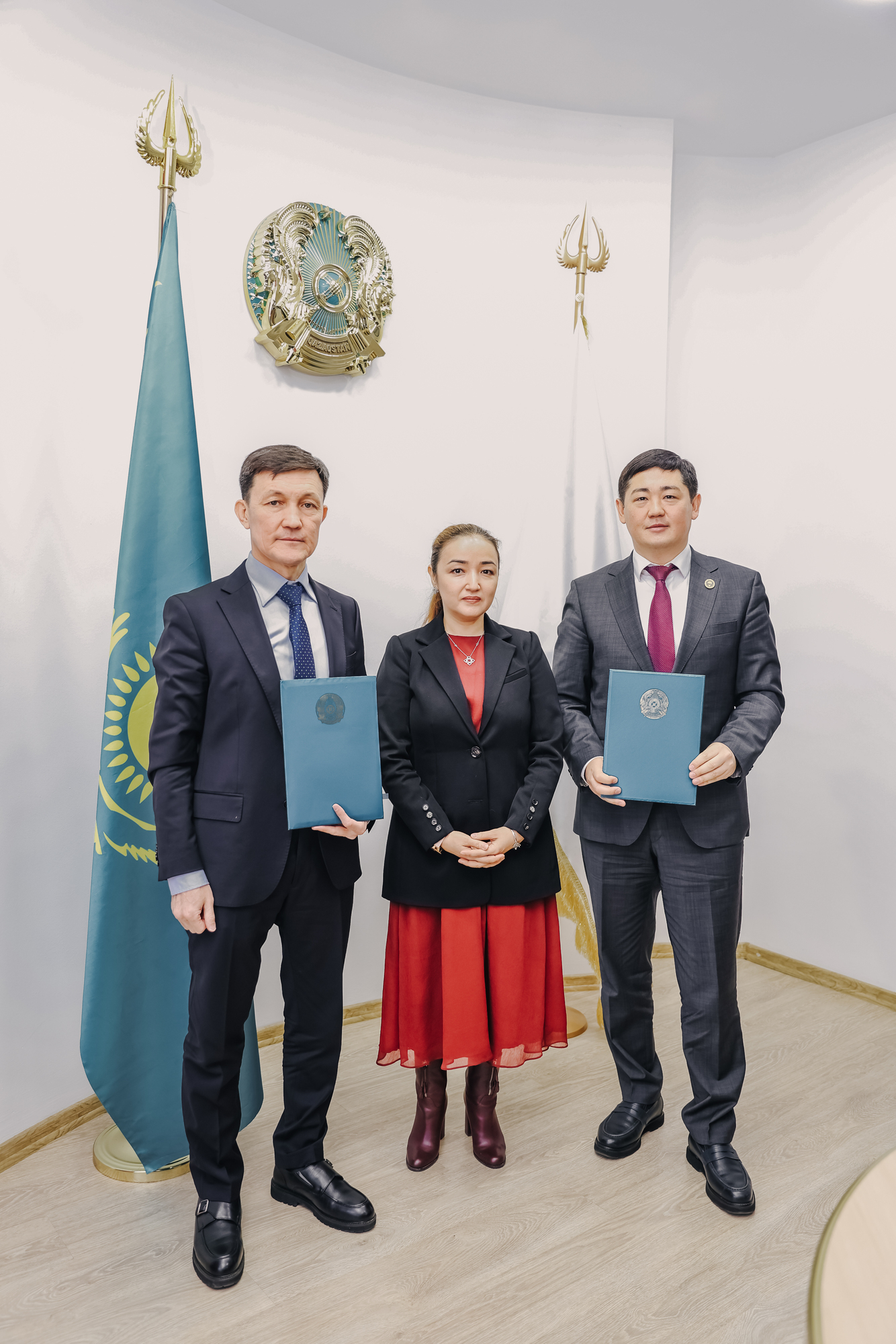KAZAKHSTAN STRENGTHENS NUCLEAR SCIENCE: SHAKARIM UNIVERSITY AND THE INSTITUTE OF NUCLEAR PHYSICS SIGN A MEMORANDUM

Today, on March 13, Shakarim University and the Institute of Nuclear Physics of the Ministry of Energy of Kazakhstan, with the participation of Vice Minister of Science and Higher Education Dinara Shcheglova, signed a cooperation agreement.
As emphasized by the university's Rector Duman Orynbekov, this is a strategic step that opens new prospects for training specialists, advancing scientific research, and implementing nuclear technologies.
"Shakarim University is already actively preparing specialists in natural sciences, engineering, and radiation safety. Cooperation with the Institute of Nuclear Physics will allow students and faculty to work with cutting-edge equipment, participate in real scientific projects, and undergo internships in leading laboratories. This will not only enhance the quality of specialist training but also strengthen the university’s contribution to the scientific and technological development of the entire region," noted the rector.
The General Director of the Institute of Nuclear Physics, Sayabek Sakhiev, provided a detailed overview of the institute’s activities and expressed readiness to share knowledge, offer laboratory resources, and involve students and faculty in joint projects. This collaboration will reinforce Kazakhstan’s position in the global scientific community.
Key Areas of Cooperation:
- Training specialists in nuclear physics, radiation safety, and radioecology.
- Scientific research in radiochemistry and solid-state physics.
- Integration of nuclear technologies in industry, medicine, and environmental protection.
- Participation in international projects such as NA62, DUNE, and LHCb.
What Will Shakarim University Gain?
- Access to state-of-the-art laboratories and particle accelerators.
- Internships at leading research centers.
- Strengthening the university’s global ranking.
- Joint training programs in nuclear physics, radiation safety, and non-destructive testing methods.
- Development of scientific research, including studies in radioecology, radiochemistry, and solid-state physics.
- Practical application of nuclear technologies and integration of innovative solutions into industry, medicine, and ecology.
- Creation of educational programs with the involvement of leading experts and laboratory resources from the Institute of Nuclear Physics.
Why Is This Important for the Region?
The importance of linking science to regional development was also highlighted.
"We cannot ignore the environmental legacy of the nuclear test site," said Rector Duman Orynbekov. "That is why solutions in radiation safety, ecosystem restoration, and the peaceful use of nuclear technologies must be developed here. The scientific potential of the region should serve its future."
For decades, Semey was a center for nuclear testing. Now, it is becoming a hub for scientific and technological solutions. This collaboration will help develop radiation safety projects, ecosystem restoration efforts, and peaceful applications of nuclear technologies.
Global Best Practices:
The world’s leading universities collaborate with nuclear institutes to reach new scientific and technological heights. For example: University of Manchester (UK), Nagoya University (Japan) and Texas A&M University (USA). Now, Shakarim University is following this path.
Science, technology, and innovation – a new reality for the university and the region.
